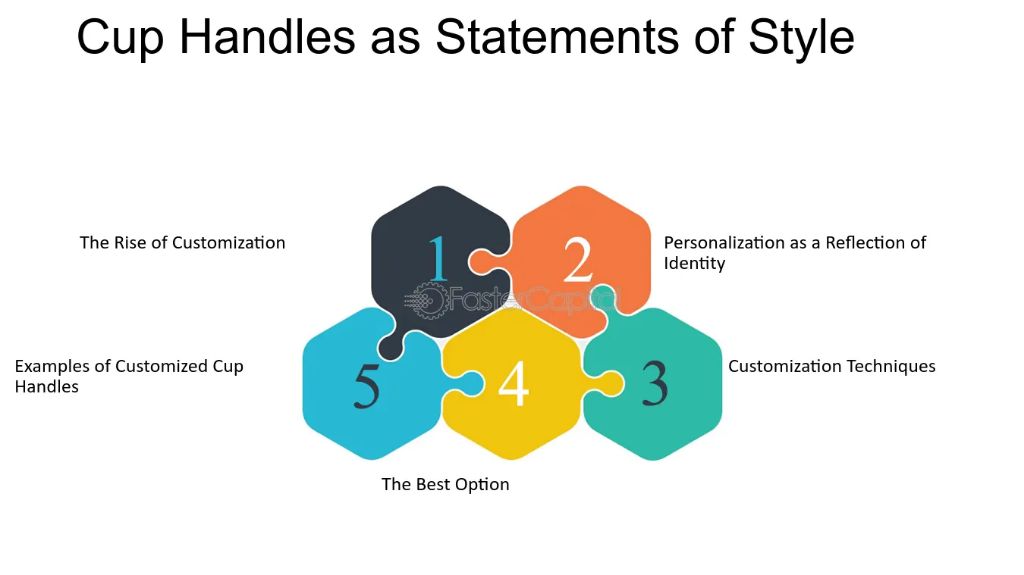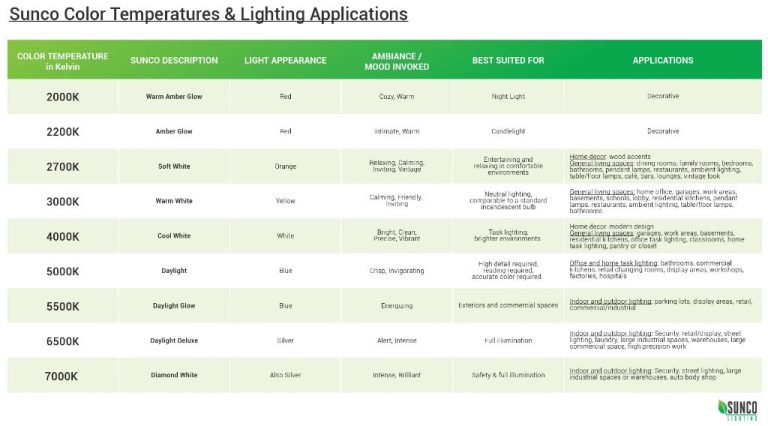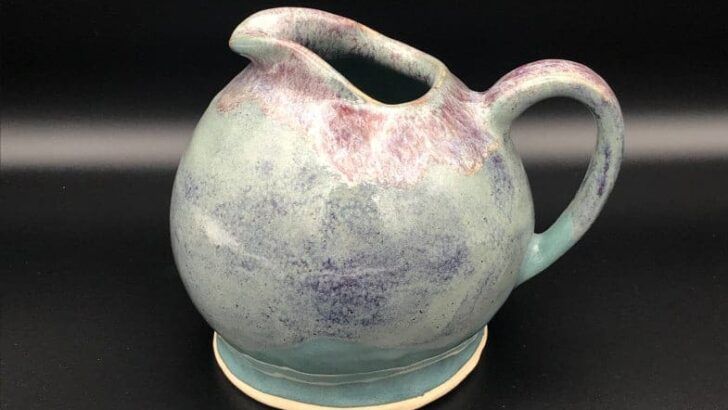What Is A Cup Without A Handle Called?
A cup without a handle is known as a handleless cup or handle-free cup. While most standard cups have handles for gripping, some styles omit handles entirely. Understanding what a handleless cup is called helps clarify terminology around drinkware. This is useful when shopping for specific cup types or discussing cup designs.
Handleless cups have existed for centuries, serving both functional and decorative purposes across many cultures. Their unique grip and visual appeal make handleless cups an interesting category to explore. Learning the proper name for these distinctive vessels provides helpful vocabulary in the world of cups, mugs, and glassware.
History of Handleless Cups
Handleless cups have existed for thousands of years across many cultures. Some of the earliest known handleless cups date back to ancient China during the Shang and Zhou dynasties around 1500-500 BCE (Source). These early Chinese tea cups, known as gaiwans, were small lidded bowls used for brewing and drinking tea. Gaiwans remained popular through the Ming dynasty as tea drinking became an intricate cultural tradition in China.
In Japan, handleless cups known as chawan have been used in the Japanese tea ceremony since the 15th century. Chawan are wide rimmed and come in various forms like stoneware and porcelain (Source). They are carefully crafted and appreciated for their simplicity and functionality.
The ancient Greeks and Romans also used handleless cups made from materials like terra cotta and glass. These cups were designed for holding wine and water. Their simple, handleless shape made them easy to stack and carry.
In the Western world, handles became popular on teacups and coffeecups starting in the early 1800s for functionality and displaying status. But handleless cups continue to hold cultural significance in East Asian tea ceremonies and remain popular for their sleek, minimalist aesthetic.
Types of Handleless Cups
Handleless cups come in various shapes and sizes for different purposes. Some of the main types include:
Tumblers – These tall, cylindrical cups often have flat bottoms so they can stand upright. Tumblers are versatile and used for water, coffee, tea, and other beverages. They are designed for portability with no handles that can break off (1).
Toddy Glasses – Originating in Sri Lanka and Southern India, these small glasses have a wide brim and narrowed waist. They are used to serve palm toddy, a type of alcoholic beverage (2).
Sake Cups – Small, wide cups used for serving sake, a Japanese rice wine. They are traditionally ceramic with no handles. Sake cups allow appreciation of the sake’s aroma and flavor (3).
Tea Bowls – Used in Japanese tea ceremonies, these bowl-shaped cups often have a wide mouth and hold around 4-6 oz of tea. They are handleless to allow holding with both hands (4).
Cappuccino/Espresso Cups – Short, handleless cups designed for rich, concentrated coffee drinks like cappuccinos and espressos. Their wide, open shape allows for foam.
(1) https://nmteaco.com/No-Handle_c_799.html
(2) https://www.amazon.com/handleless-mug/s?k=handleless+mug
(3) https://nmteaco.com/No-Handle_c_799.html
(4) https://www.amazon.com/handleless-mug/s?k=handleless+mug
Advantages
Handleless cup designs have some clear benefits compared to traditional handled mugs. According to Quora, handleless cups are often easier to hold and grip with two hands, especially for smaller cups. The simple, clean design is also more minimalist and can allow for better heat transfer to your hands when holding a warm beverage.
Additionally, handleless cups tend to be easier to clean because there are no hard to reach nooks and crannies for bacteria to hide as described by Barista Pro. The smooth, handle-free surface means the entire cup can be thoroughly cleaned. Handleless cups can also often be stacked more efficiently for storage.

Some people find the aesthetic of a handleless cup to be more refined and modern. The simplicity of the design puts focus on the vessel itself and the beverage inside. Handleless cups allow for a seamless and minimalist look when serving beverages like coffee, tea, or espresso.
Disadvantages
While handleless cups have some benefits, they also come with some drawbacks or challenges compared to traditional handled mugs or cups. Some key disadvantages include:
Difficult to hold and carry when full – Without a handle, handleless cups can be more awkward to pick up, hold, and carry when filled with hot coffee or tea. The lack of a handle makes the full cup harder to grip securely.
More prone to spilling – Related to the grip issue, the lack of a handle can make a full handleless cup more prone to spilling, as the cup is not as easy to stabilize and control when drinking from it.
Can burn fingers more easily – The hot sides of a handleless cup can lead to burning fingers more easily without a handle that acts as insulation and allows you to hold the cup without direct skin contact.
Limited styles and sizes – Handleless cups come in fewer available sizes and styles compared to traditional handled mugs. For example, it’s harder to find large handleless coffee mugs over 12 oz capacity.
Not suitable for all beverages – Handleless cups work well for something like espresso, but may not be suitable for larger drinks. They are also not great for children or others who struggle with a steady grip.
Modern Uses
Handleless cups are still commonly used today for drinking tea, coffee, and other beverages. Their sleek, minimalist design makes them popular in modern kitchens and cafes. Some examples of how handleless cups are used in modern times include:
– Japanese tea ceremonies – Handleless teacups, known as yunomi, are an essential part of the Japanese tea ceremony. The cups are purposefully designed without handles to encourage mindful drinking.
– Specialty coffees – Many coffee shops now serve signature drinks like cortados and macchiatos in handleless espresso cups or small mugs. The smaller cups highlight the intensity of the coffee.
– Minimalist home decor – Handleless cups and mugs fit well with many contemporary, minimalist kitchen designs. Their simple, sleek look complements modern aesthetics.
– Fancy restaurants – High-end restaurants often use handleless teacups or coffee cups to serve after-dinner drinks in an elegant but modern way.
– Ergonomic design – Some handleless cups are designed to be easier to grip and lift without handles. This makes them more functional.
While handleless cups may not be as ubiquitous as handled mugs today, they still play an important role in many modern contexts where their unique look and feel are an asset.
Handleless Cup Alternatives
While technically handleless cups, there are many other types of handleless vessels that serve similar functions. These include:
- Handleless mugs – These are wider and shorter than traditional handleless cups, but still have no handles. Popular styles are cylindrical or tapered mugs often used for coffee, tea, or hot chocolate.
- Tankards – Handleless tankards have vertical sides and a heavy weighted bottom. They are excellent for serving beer, ale, or other beverages. Stainless steel and ceramic tankards are common.
- Tumblers – Insulated stainless steel tumblers are a modern handleless option ideal for transporting coffee, water, or other beverages on the go. They often have lids with sipping openings.
- Sake cups – Small, porcelain handleless cups used for drinking sake. They allow sake to be sipped slowly at an ideal temperature.
While traditional handleless cups are fairly specific in their design, handleless mugs, tankards, tumblers and more all provide unique benefits. Those seeking handleless drinking vessels have many alternative options to consider.
Official Terminology
Handleless cups are known by several official terms depending on factors like their material, intended use, and cultural tradition. Some of the common official terms include:
- Sipper cup – This term refers to handleless cups designed for sipping hot beverages like tea or coffee. They are meant to be held carefully with both hands. The sipper cup is one of the oldest forms of cups for hot beverages. (Source: https://www.1stdibs.com/answers/what-are-handleless-tea-cups-called/)
- Mug – In casual usage, a handleless cup intended for hot drinks is frequently just referred to as a “mug”.
- Tumbler – A handleless drinking cup made of glass, metal, ceramics or plastic is often called a tumbler.
- Asian tea cup -Handleless cups designed for drinking Asian teas like green tea or oolong may be referred to as “Asian tea cups”.
So in summary, while there’s no single official term, “sipper cup” and “tumbler” are two common specific names for a handleless cup or mug. But casual descriptions like “mug without a handle” are also widely used and understood.
Notable Examples
Some of the most iconic and famous handleless cup designs include:
The Anthora Paper Cup – This classic blue and white paper cup, featuring the image of the Greek goddess Amphora, is a fixture of New York City culture since the 1960s. The ubiquitous cardboard coffee cup sealed with a plastic lid has become symbolic of every day life in NYC and has been featured in movies like Men in Black and TV shows like Law & Order. It can be found at thousands of delis and coffee carts throughout the city. Learn more at https://nycoffeecup.com/pages/fun-facts.
IKEA Förhöja Coffee Mugs – These simple, colorful stackable coffee mugs with no handles are iconic pieces of IKEA dishware. Made of durable stoneware, their handleless design has a minimalist Bauhaus aesthetic. They come in vibrant primary colors and are affordably priced, selling over 2 million units per year.
Denny’s Coffee Cup Mug – The classic brown ceramic diner mug found at Denny’s and other diners around the US is handleless with a wide grip. It’s designed for serving hot coffee and keeping it warm. The emblematic mug is featured prominently on the Denny’s logo. It’s still used to serve coffee at Denny’s locations today.
The examples above showcase some of the most recognizable and noteworthy handleless cup designs that have become part of pop culture and everyday life.
Conclusion
In summary, cups without handles have been used for centuries across many cultures, known by names like handleless mug, grip cup, or finger cup. While less stable than handled cups, handleless cups promote better grip strength and dexterity. They continue to be used today for reasons like improved ergonomics or minimalist aesthetics. No matter what you call them, handleless cups offer unique benefits despite requiring more care when drinking. The official terminology for a cup without a handle is simply a “handleless cup.” By understanding the history, uses, and proper handling technique for grip cups, anyone can utilize them effectively.



